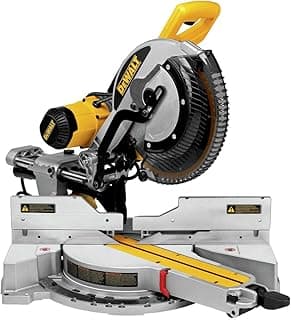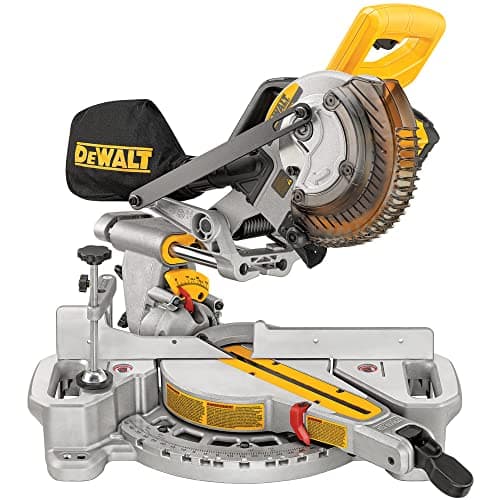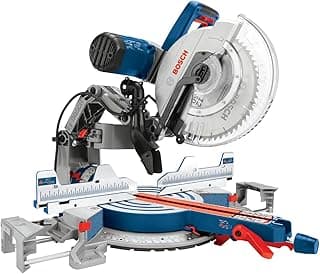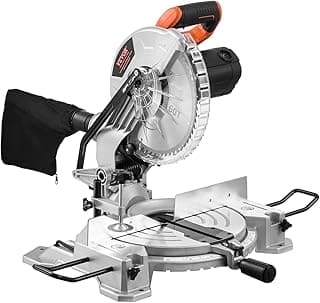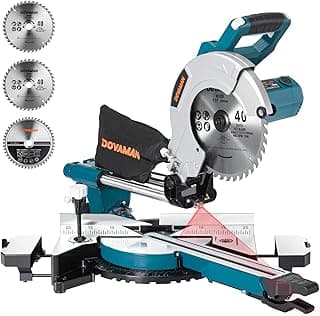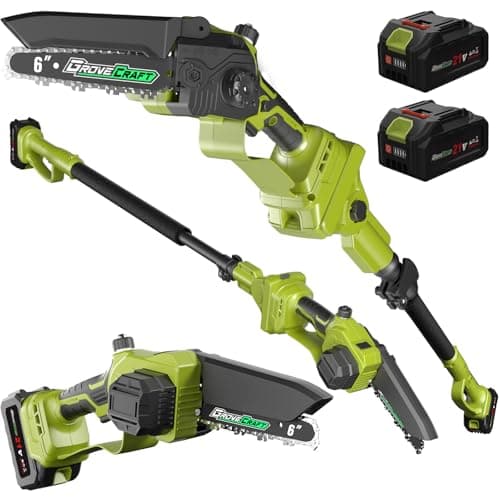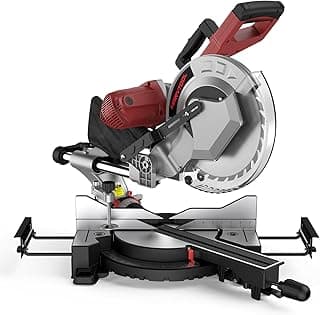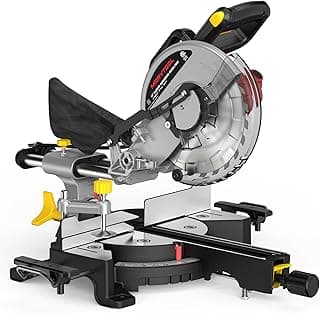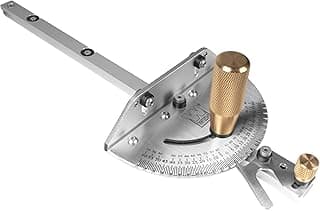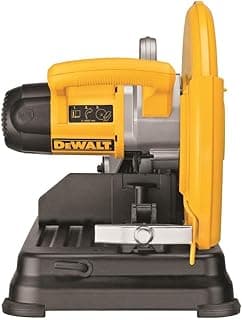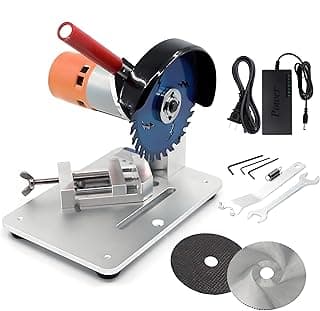If you’re serious about woodworking, having the right tools is crucial. And here’s the truth: not all chop saws are created equal. But don’t worry—this guide will help you zero in on the best chop saw for woodworking. You’ll save time, avoid frustration, and achieve professional-level cuts every time.
Let’s break it down. First, consider the type of material you’ll cut most often. While some saws excel at wood, others—like the best metal chop saw—are designed for tougher metals. Understanding these differences is essential. Next, we’ll explore the features that make a chop saw stand out, from blade quality to motor power. By the end of this review, you’ll know exactly which model suits your workshop. And yes, we’ll also cover common questions like the difference between chop saws and miter saws, so stick with us—you won’t want to miss these insights.
Top Picks
Best Precision Cuts: DEWALT Miter Saw, 12 Inch Double Bevel Sliding Compound Miter Saw
The DEWALT DWS779 12-Inch Sliding Miter Saw stands out as a professional-grade cutting tool designed for accuracy and endurance. Built with a robust 15-amp motor delivering 3,800 RPM, it provides smooth, consistent power for demanding cutting tasks. The dual-bevel system allows precise angle adjustments up to 45 degrees, making it ideal for crown molding, framing, and detailed trim work. Its stainless steel miter detent plate ensures repeatable accuracy and long-term durability. The sliding rails offer impressive cutting capacity, easily handling large lumber or wide boards with minimal vibration.
In real-world use, customers often praise its precision, reliability, and value compared to higher-end models. Many appreciate the solid feel of the saw, the accuracy of the factory calibration, and the smoothness of the sliding mechanism. While its 56-pound weight makes it less portable than lighter alternatives, users view this heft as an indicator of build quality and stability during operation. Overall, the DEWALT DWS779 is regarded as a dependable workhorse, offering professional performance and longevity at a fair price point.
Best Single-Bevel Power: DEWALT 12-Inch Miter Saw, 15-Amp, Single Bevel, Compound (DWS715)
The DEWALT DWS715 12-Inch Single Bevel Compound Miter Saw is engineered for accuracy, portability, and dependable performance. Powered by a 15-amp motor delivering up to 4,500 RPM, it provides clean, fast cuts through hardwood, trim, and framing materials. The stainless steel miter detent plate features multiple preset angles that lock securely for precise, repeatable cuts, reducing setup time on the job. Its 12-inch carbide-tipped blade with 80 teeth ensures fine, smooth finishes ideal for carpentry and woodworking applications.
Users frequently highlight the saw’s balance of power and convenience. Weighing just under 43 pounds, it’s lighter than many dual-bevel models, making transport and setup easier without sacrificing stability. The single-bevel design limits complex compound angles, but for most standard woodworking and remodeling tasks, it performs exceptionally well. The brushless motor contributes to longer tool life and reduced maintenance. Overall, the DEWALT DWS715 earns strong marks from professionals and DIY users alike for its accuracy, smooth operation, and solid construction—offering professional-grade results in a compact, efficient package.
Best Cordless Precision: DEWALT 20V MAX 7-1/4-Inch Miter Saw, Tool Only, Cordless (DCS361B)
The DEWALT DCS361B 20V MAX Cordless Miter Saw offers impressive precision and mobility for users who need cutting power without the limitations of a cord. With a 4-inch alloy steel blade powered by a 20V lithium-ion system, it delivers clean, accurate cuts on wood and light metals. The saw’s brush motor runs at 4,500 RPM, providing fast, consistent performance suitable for trim, molding, and framing projects. Its bevel capability allows angled cuts up to 90 degrees, and the integrated spindle lock ensures quick, secure blade changes.
In practice, users praise this saw’s portability and ease of use. Weighing around 30 pounds, it’s light enough for frequent transport between job sites yet sturdy enough for professional work. The cordless design provides excellent freedom of movement, making it a favorite among contractors working in areas without easy access to power outlets. While the need to purchase batteries separately can be a drawback, most users find the trade-off worthwhile for the convenience and flexibility. Overall, the DEWALT DCS361B is highly regarded as a compact, dependable, and precise cordless miter saw that delivers the quality expected from DEWALT’s professional lineup.
FAQs
What is the best chop saw blade for metal?
When cutting metal, using the right blade is critical for safety and efficiency. For metal, you want a blade made from high-speed steel (HSS) or an abrasive cutoff wheel. HSS blades are durable, resist heat, and provide cleaner cuts for non-ferrous metals like aluminum or brass. For ferrous metals, an abrasive wheel may be necessary, though the cut will be rougher.
Teeth per inch (TPI) also matters. A higher TPI (around 60–100) gives a smoother cut on thinner metals, while lower TPI (24–40) is better for thicker materials. Always match the blade to your saw’s RPM rating to avoid damage or accidents. In general, using the correct blade ensures longevity for both the blade and the saw itself.
What is the best saw for cutting wood?
For woodworking, a chop saw with a carbide-tipped blade designed for wood is ideal. Look for blades with around 24–60 teeth depending on the smoothness you need: fewer teeth for rough, fast cuts and more teeth for fine, precise cuts.
Beyond the blade, motor power and cutting capacity are key. A saw with at least 15 amps and a large enough blade (10–12 inches for most wood projects) will handle everything from 2x4s to larger boards. Features like adjustable fences, miter stops, and dust collection can significantly improve efficiency and safety. Ultimately, the best saw combines blade quality, power, and ergonomic design to make woodworking faster and more accurate.
Is there a difference between a chop saw and a miter saw?
Yes, there is a clear difference. A chop saw is typically a fixed-angle saw primarily used for straight, 90-degree cuts. It is designed for speed and strength, often used on wood, metal, or plastic depending on the blade.
A miter saw, on the other hand, allows angled cuts. The saw head pivots to create bevels and compound angles, making it ideal for trim, moldings, and framing. While some miter saws can cut wood efficiently, they aren’t as robust for metal or extremely thick stock. Understanding this difference ensures you choose the right saw for your project type.
Can a chop saw be used for wood?
Absolutely. While some chop saws are designed for metal, a chop saw with a wood-compatible blade can handle wood cutting tasks efficiently. It’s ideal for straight cuts on lumber, framing boards, or even molding if precise measurements are used.
However, keep in mind: using a metal-specific blade on wood is dangerous and can damage both the material and the blade. Always select a blade suited for wood, and ensure proper safety equipment such as eye protection and a dust mask. With the right setup, a chop saw can be a versatile addition to any woodworking shop.
Final Thoughts
Choosing the best chop saw for woodworking comes down to understanding your materials, blade types, and saw features. By selecting a saw with the right blade, motor power, and cutting capacity, you can make precise, safe, and efficient cuts every time. Remember, even tools like the best chop saw or best metal chop saw have specialized uses, so matching the saw to the task is essential. Invest wisely, and your workshop will be equipped for years of productive woodworking.

